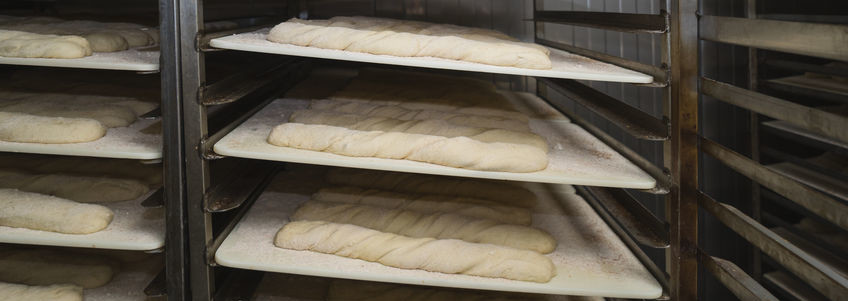
- It allows more carbon dioxide to be produced through fermentation. This causes the gluten to become extensible again. After sheeting and moulding, the dough lacks extensibility and is mostly degassed with larger air cells subdivided. Proofing rectifies these “problematic” conditions in the dough.
- Biochemical leavening produces the desired volume, cell structure, flavor, and eating qualities of the finished product.
Proofing conditions
The proofer establishes the best conditions for yeast to do what it does best: produce gas and make the dough rise. To readily expand, the dough needs optimum conditions of temperature, time and relative humidity (RH). These conditions are also known as proofing variables.
- Proof temperature: 90–100°F (33–37.8°C). Yeast is most active at this temperature range, and its activity doubles for every 18°F (10°C) increase in temperature.
- Proof time: ranges from 50 to 70 minutes
- Relative humidity: 80 to 90%. Upper limit is used in white bread, while lower limit is mainly used in whole wheat, rye and multigrain bread.
Effects of temperature during proofing:
| Too high | Too low |
|
|
Effects of RH during proofing:
| Too high (too moist conditions) | Too low (dry conditions) |
|
|
Achieving proofing consistency
It does not matter if you have a continuous or batch-type proofer. They all work under the same principle regardless of basic differences in operation and throughput. What matters is that you can control the variables that directly impact the production plan and quality of the finished product.
Final proofing can be profiled with a combination of RH and temperature recording device. By using this device, bakers can accurately track humidity and product temperature. This system can be used in high-speed bakeries to monitor equipment performance, minimize process variations, increase production yield and reduce waste.

